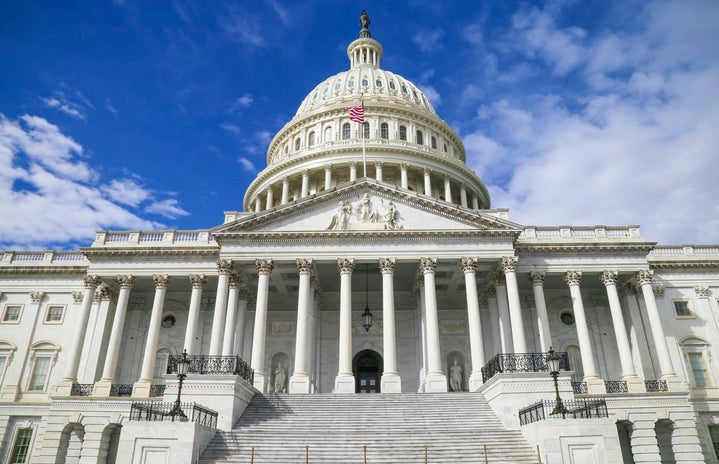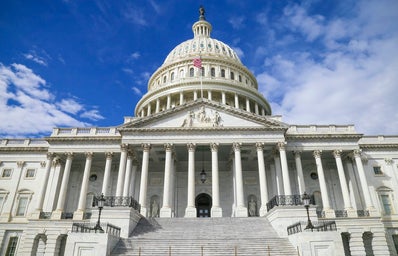For many around the world, last year was one we will always remember yet wish we could forget. As an American citizen, I felt this to the core. When the clock struck midnight and 2021 was rung in, the United States gave a collective sigh. 2020 was behind us, and 2021 promised to be a year of rebuilding. With vaccines being administered and the economy recovering, people had begun to be hopeful.
Yet, how naive we all were. On January 6, 2021, on the steps of the US Capitol Building, the new year greeted us like a slap in the face. As we are all well aware by now, the event to which I allude was the storming of the Capitol by what can only be dubbed domestic terrorists. To me, as an American citizen, the event signalled that the very foundation of American democracy was in peril, as pro-Trump extremists attempted to seize the presidency through force, aggression, and violence.
So what exactly happened?
Let us be clear, this was an act of domestic terrorism and anarchy the likes of which have never been seen before. The last large scale occupation of the Capitol Building was when the British set it ablaze in the War of 1812. Armed with guns, nooses, pipe bombs, and a vendetta, these far-right groups overran the outnumbered police force, climbed the wall, and all hell broke loose. In the violence and chaos, the Capitol Building was desecrated, five people lost their lives, and many were injured. Some arrests were made on the day, and many more have been made in the days immediately following. However, many across the US and globally have begged the question: why were the attackers not met, on the day, with the brutality and force typical of the infamous United States police force?
Large scale National Guard support was allegedly offered prior to the day in anticipation of unrest, but DC mayor Muriel Bowser declined and instead deployed 340 National Guardsmen to control traffic and public transportation, meaning they were not equipped to aid in the controlling of a mob. If intelligence suggested that unrest was imminent, why weren’t the police forces better prepared? Why did Bowser turn down the aid of the National Guard? Furthermore, it is undeniable that the capitol police’s level of preparation for Black Lives Matter protests in the summer drastically outshone their preparation for the lead up to the inauguration. Had the attackers been black, or any other minority group, it is indisputable that the police response to the event would have been brutal, violent, and unforgiving. This tragic and greatly disheartening fact truly reflects the deep fractures that penetrate the core of American society, and thoroughly encapsulates the damage that Trump’s presidency has done to the country. These are symptoms of a divided state.
The consequence is that we cannot afford to underestimate the extent of division in the US. On January 14, CNN broke the news that there is now an investigation into whether or not the Capitol riots were planned ahead of Trump’s rally on January 6. Investigators noted that the weapons they had and the tactics they used indicated a certain level of planning beyond it being just a protest that spiralled out of control. While Trump’s words inflamed the situation, the evidence suggested he merely added fuel to an already burning fire. Since the election in November, Trump has filed lawsuits, riled crowds, and called into question the credibility of our democratic institutions. Claiming he won “in a landslide,” Trump fought the results on every level. When the Supreme Court refused to hear the lawsuits put forth by the state of Texas, that should have been the end of this fight, but he continued to push the issue. His supporters responded to the call to arms by imagining themselves an army against corruption and against the people who “stole” the election. Thus, the coup on Capitol Hill.
So, what does this mean going forward?
For those who watched President Biden’s inauguration last week, you will have seen the incredible arrangement of poetry, powerful oration, power dressing, and diversity that was on full display. While the inauguration and Tom Hank’s ‘Celebrating America’ special can be belittled to performative acts, it is clear that in order to heal the deep cracks in America’s society, we need to start by addressing them, acknowledging and understanding their existence, and then using education and representation to fix them.
As the talented Youth Poet Laureate, Amanda Gorman, put it so eloquently at the inauguration in her poem ‘The Hill We Climb:’ “And so we lift our gazes not to what stands between us / but what stands before us / We close the divide because we know, to put our future first, / we must first put our differences aside / We lay down our arms / so we can reach out our arms / to one another.”



